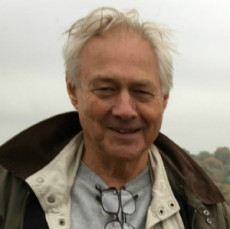Srebrenica, July 26, 2008: We set off from Tuzla to Srebrenica early in the morning with Shweta and myself squeezed into the backseat of Beba’s small car together with Antigona Kukaj, another wonderful AP Peace Fellow who is volunteering this summer in Tuzla with the Bosnian office of the Landmine Survivors Network. Beba’s husband is at the wheel. Rain is falling and the sky ahead looks dark and menacing.
We are returning along the route that Beba and her husband took back in May 1992, after they were cleansed from Srebrenica.
Three years later in 1995, as the town was falling, a long column of Muslims tried to escape through the hills and was cut to pieces by the Bosnian Serbs. In 2005, Sabri Ben-Achour, an AP Peace Fellow retraced the route of the doomed column with Zulfo Salihovic, his host, who had been at the head of the column in 1995 and survived.
This entire area to the east of the Inter-Entity Boundary Line (IEBL – the boundary that separates the Bosnian Serb Republic from the rest of the country) had been cleansed of Muslims by 1995 and remained stubbornly resistant to their return for years after the war.
This is now beginning to change. We pass through the small town of Konjevic Polje, which is now entirely Muslim (Bosniak) apart from a scattering of Serb graves and a large Orthodox church that was built in the front garden of a Muslim family. The owner, Fatah Orlovic, has been trying to get it removed for six years, so far without success. The fact that she is trying is a sign of the times.
These skirmishes create frustration and also elation. We pass through Kravica, a small village that has a grim reputation on both sides. Serbs were killed here in 1994 after the Muslim soldiers in Srebrenica began to push out from the besieged enclave under their able general, Nasr Oric. The following year, over a thousand Muslims were rounded up in the surrounding hills as they tried to escape Srebrenica, and brought here to an abandoned farming cooperative where they were bludgeoned to death.
Oric was acquitted by the Hague tribunal of having ordered the massacre, but seven Serbs are currently on trial before the special court in Sarajevo on a charge of genocide. A verdict is expected any day now. Muslims have been prevented placing flowers at Kravica, on the orders of Milorad Dodik, the powerful Prime Minister of the Republika Srpska.
Relatives have also been rebuffed in their attempts to commemorate another brutal event at Bratunac, a small town that lies at the end of the road out of Srebrenica. Historically, Bratunac has played the dowdy cousin to the more glamorous Srebrenica, but it played a key role in Srebrenica’s destruction at the start of the war and during the massacre. After the first Muslims (including Beba) were expelled in April 1992, scores of Muslims from Srebrenica were murdered in a school gym in Bratunac. Their relatives have tried to commemorate and lay flowers, but were prevented by the local authorities.
Many western diplomats blame Dodik for reinforcing the division of Bosnia, and resisting reconciliation. But each of his rebuffs to the relatives also feeds their sense of outrage and keeps Srebrenica in the news. Following Karadzic’s arrest, Dodik offered to help Karadzic’s family and asked the international community to allow Karadzic’s wife to travel to The Hague (always assuming he is extradited). If only he had shown similar remorse towards his victims.
Posted By Iain Guest
Posted Jul 26th, 2008

